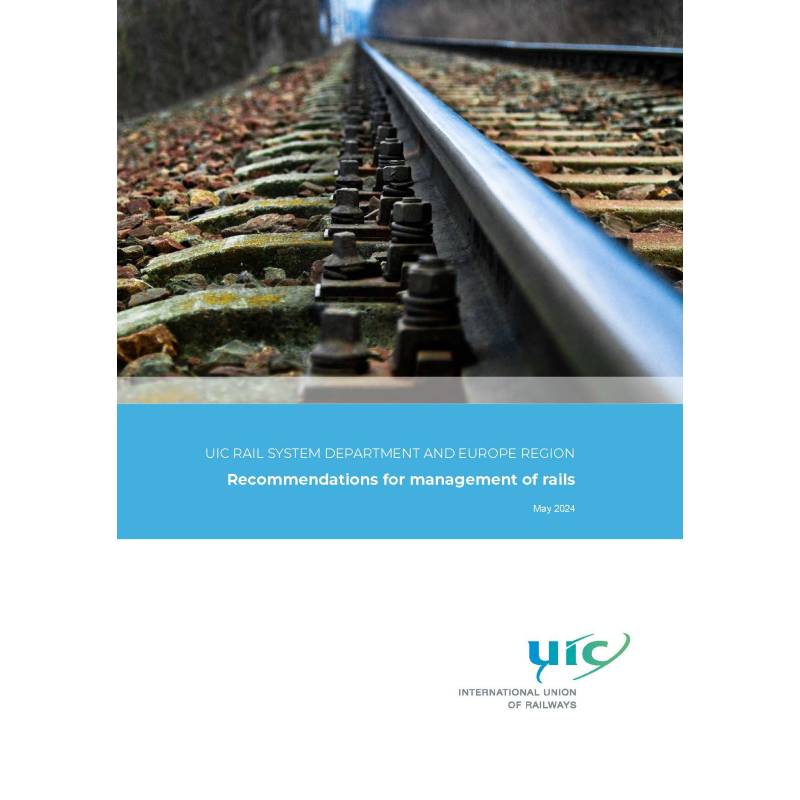
Recommendations for management of rails
The Infrastructure Sector, based on the decision of its TEG (Track Expert Group), decided withdrawn the UIC Leaflet 715-2 in the last edition (2nd edition, August 2003).
However, it is important that technical contents shall remain available for the UIC members in form of technical report, because the old UIC Leaflet 715-2 isn’t no more available for consultation.
Thus, the technical report “Recommendations for management of rails”, replaces the UIC Leaflet 715-2, 2nd edition.
Rails account for a large proportion (from 30% - 50%) of the cost of new infrastructure. Management of this asset, its maintenance and renewal costs play a key role in the optimisation of track maintenance costs.
Rails are also the track components which are directly subject to stresses and undergo direct wear by rolling stock. They are subjected to loads and dynamic forces, which they transfer to the infrastructure through sleepers and ballast, possibly amplified by the effect of surface defects in the rails. Consequently, there are two aspects to optimisation of rail maintenance:
- optimisation of the useful life on a given site depending on the loads carried and speeds, also bearing in mind the effect on track maintenance of other components such as sleepers and ballast,
- optimisation of maintenance operations relating to surface condition to reduce corrective work on sleepers and on track geometry, and to minimise overall expenditure for maintenance of superstructure, infrastructure and bridges.
These different factors are clearly interdependent.
The service life of a rail depends especially on the loads sustained and the speeds operated on the different lines; consequently, it is highly desirable that the railways use the classification of IRS 70714, which is highly representative of actual traffic on the lines.
Furthermore, since rail maintenance policy depends on changes in the condition of materials and changes in internal and surface defects, it is recommended that a system of monitoring statistics of rail breaks and damage be introduced in order to be able to assess the residual value of materials at any given time.
| Author | UIC |
| ISBN | 978-2-7461-3393-8 |
| Pages | 16 |
Data sheet
- Language
- English
- Format
- Downloadable
- Edition
- Ed. no.1
- Edition date
- 01/05/2024
- Publication date
- 24/05/2024
- Page number
- 16
- Theme
- Infrastructure Infrastructure
- sku
- 5-24005E-PDF
- Reference
- 5-24005E
 Cookie preferences
Cookie preferences

